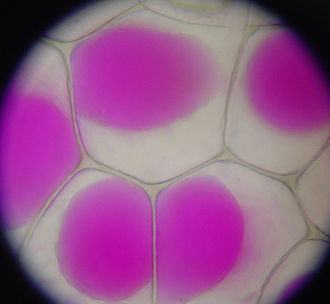Soda inermis
Species of plant
Soda inermis, commonly known as agretti or barba di frate, is a species of plant in the family Amaranthaceae. It is native to the Mediterranean region and is cultivated for its edible leaves and stems.
Description[edit]
Soda inermis is an annual herbaceous plant that can grow up to 70 cm in height. The plant has a bushy appearance with narrow, succulent leaves that are bright green in color. The stems are fleshy and can be slightly reddish. The plant produces small, inconspicuous flowers that are typically greenish-white.

Habitat[edit]
Soda inermis thrives in saline environments, often found in coastal areas and salt marshes. It is well adapted to grow in soils with high salt content, making it a halophyte. This adaptation allows it to survive in environments where many other plants cannot.
Cultivation[edit]
Soda inermis is cultivated primarily in Italy and other Mediterranean countries. It is sown in early spring and harvested in late spring to early summer. The plant prefers full sun and well-drained soil. It is often grown in gardens and small farms for its culinary uses.
Culinary Uses[edit]
The young leaves and stems of Soda inermis are edible and are a popular ingredient in Italian cuisine. They are often used in salads, sautéed, or served as a side dish. The flavor is slightly salty and reminiscent of spinach or chard.

Nutritional Value[edit]
Soda inermis is rich in vitamins and minerals, particularly vitamin A, vitamin C, and iron. It is low in calories and high in fiber, making it a healthy addition to the diet.
Related Species[edit]
Soda inermis is closely related to other species in the Salsola genus, such as Salsola soda, which is also known for its use in glassmaking and as a food source.
Ecological Importance[edit]
As a halophyte, Soda inermis plays a role in stabilizing coastal ecosystems. It helps prevent soil erosion and provides habitat for various wildlife species.

See Also[edit]
Related Pages[edit]
Ad. Transform your life with W8MD's Budget GLP-1 injections from $49.99


W8MD offers a medical weight loss program to lose weight in Philadelphia. Our physician-supervised medical weight loss provides:
- Weight loss injections in NYC (generic and brand names):
- Zepbound / Mounjaro, Wegovy / Ozempic, Saxenda
- Most insurances accepted or discounted self-pay rates. We will obtain insurance prior authorizations if needed.
- Generic GLP1 weight loss injections from $49.99 for the starting dose of Semaglutide and $65.00 for Tirzepatide.
- Also offer prescription weight loss medications including Phentermine, Qsymia, Diethylpropion, Contrave etc.
NYC weight loss doctor appointmentsNYC weight loss doctor appointments
Start your NYC weight loss journey today at our NYC medical weight loss and Philadelphia medical weight loss clinics.
- Call 718-946-5500 to lose weight in NYC or for medical weight loss in Philadelphia 215-676-2334.
- Tags:NYC medical weight loss, Philadelphia lose weight Zepbound NYC, Budget GLP1 weight loss injections, Wegovy Philadelphia, Wegovy NYC, Philadelphia medical weight loss, Brookly weight loss and Wegovy NYC
|
WikiMD's Wellness Encyclopedia |
| Let Food Be Thy Medicine Medicine Thy Food - Hippocrates |
Medical Disclaimer: WikiMD is not a substitute for professional medical advice. The information on WikiMD is provided as an information resource only, may be incorrect, outdated or misleading, and is not to be used or relied on for any diagnostic or treatment purposes. Please consult your health care provider before making any healthcare decisions or for guidance about a specific medical condition. WikiMD expressly disclaims responsibility, and shall have no liability, for any damages, loss, injury, or liability whatsoever suffered as a result of your reliance on the information contained in this site. By visiting this site you agree to the foregoing terms and conditions, which may from time to time be changed or supplemented by WikiMD. If you do not agree to the foregoing terms and conditions, you should not enter or use this site. See full disclaimer.
Credits:Most images are courtesy of Wikimedia commons, and templates, categories Wikipedia, licensed under CC BY SA or similar.
Translate this page: - East Asian
中文,
日本,
한국어,
South Asian
हिन्दी,
தமிழ்,
తెలుగు,
Urdu,
ಕನ್ನಡ,
Southeast Asian
Indonesian,
Vietnamese,
Thai,
မြန်မာဘာသာ,
বাংলা
European
español,
Deutsch,
français,
Greek,
português do Brasil,
polski,
română,
русский,
Nederlands,
norsk,
svenska,
suomi,
Italian
Middle Eastern & African
عربى,
Turkish,
Persian,
Hebrew,
Afrikaans,
isiZulu,
Kiswahili,
Other
Bulgarian,
Hungarian,
Czech,
Swedish,
മലയാളം,
मराठी,
ਪੰਜਾਬੀ,
ગુજરાતી,
Portuguese,
Ukrainian